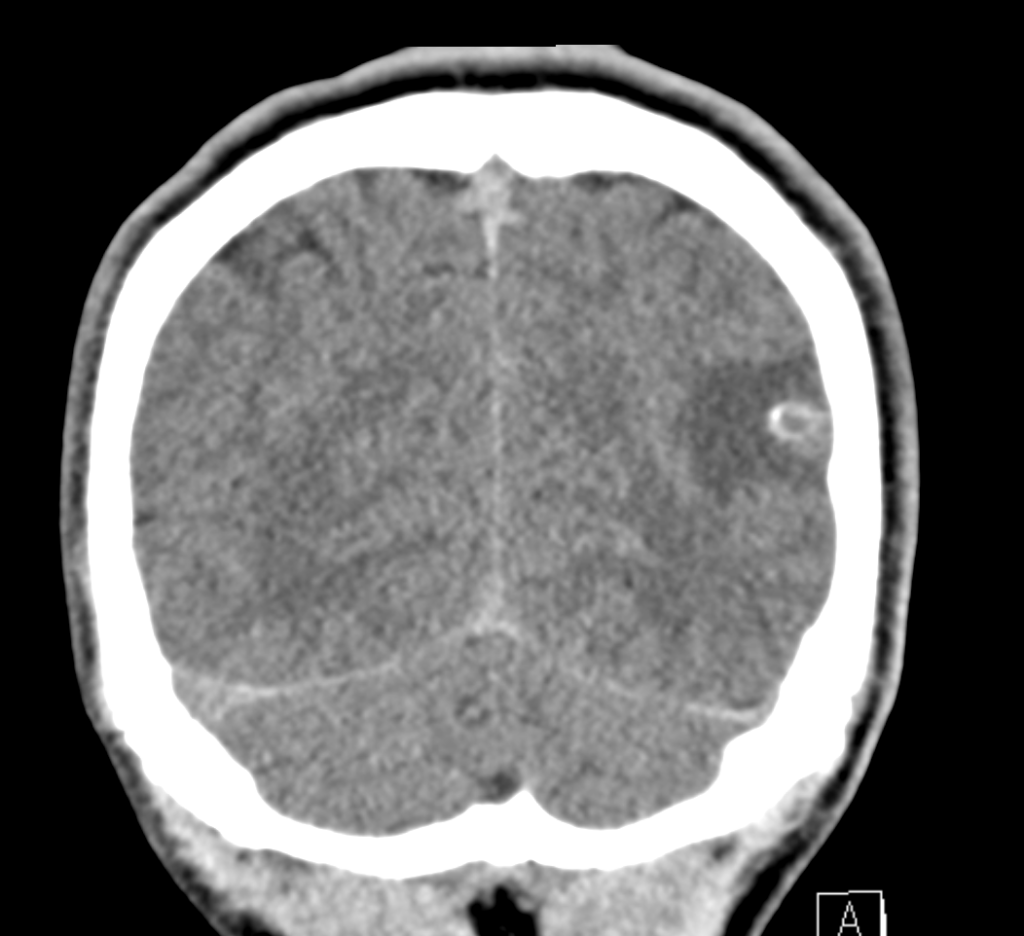CT Case 033
A 22yo male is brought in by ambulance after a tonic-clonic seizure which self-terminated after approximately five minutes.
This is his first seizure
He has no significant past medical history. He grew up South East Asia and has been living in Australia for the last five years.


Describe and interpret the CT images
CLINICAL CORRELATION
This presentation is very suspicious for neurocysticercosis.
This is a parasitic infection caused by ingestion of the eggs from the pork tapeworm Taenia solium.
Taenia solium is endemic in most low-income countries where pigs are raised.
These eggs develop into larval cysts, infecting the brain, muscle and sometimes other tissues.
See life cycle of Taenia solium below.
Note, this is a different entity from the tapeworm infection (also caused by Taenia solium) which only affects the gastrointestinal tract.
Neurocysticercosis is the most common cause of seizures in young adults living in endemic areas (South America, SE Asia and Africa).
The delay between exposure to infection and the onset of symptoms can be up to 30 years. So, the diagnosis should be considered in patients even if they have been living in Australia for many years.
New onset of seizures is the most common presentation. Other presenting symptoms are headache, neurological deficits and altered mental state.
The diagnosis of neurocysticercosis was confirmed with serological testing. This patient was treated with a combination of; anti-epileptics, anti-helminths and short-term steroids.
Bonus learning
It’s a slightly complicated life-cycle. A person gets cysticercosis by swallowing eggs found in the faeces of a person who has an intestinal tapeworm. Therefore, anyone living in the same household with someone who has a tapeworm have a much higher risk of getting cysticercosis than people who don’t.

References
- Abbott R. Emergency Imaging in Tassie. LITFL
- Long N. Funtabulously Frivolous Friday Five 258. LITFL
- Parasites – Cysticercosis. CDC
- Gibbs M. Neurocysticercosis. CMC Radiology
TOP 100 CT SERIES
Emergency Medicine Education Fellow at Liverpool Hospital NSW. MBBS (Hons) Monash University. Interests in indigenous health and medical education. When not in the emergency department, can most likely be found running up some mountain training for the next ultramarathon.
Dr Leon Lam FRANZCR MBBS BSci(Med). Clinical Radiologist and Senior Staff Specialist at Liverpool Hospital, Sydney
Sydney-based Emergency Physician (MBBS, FACEM) working at Liverpool Hospital. Passionate about education, trainees and travel. Special interests include radiology, orthopaedics and trauma. Creator of the Sydney Emergency XRay interpretation day (SEXI).
Provisional fellow in emergency radiology, Liverpool hospital, Sydney. Other areas of interest include paediatric and cardiac imaging.






